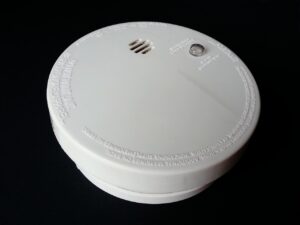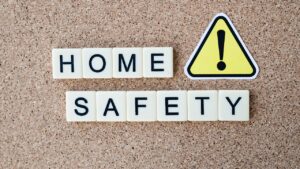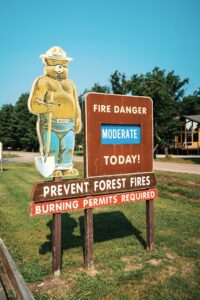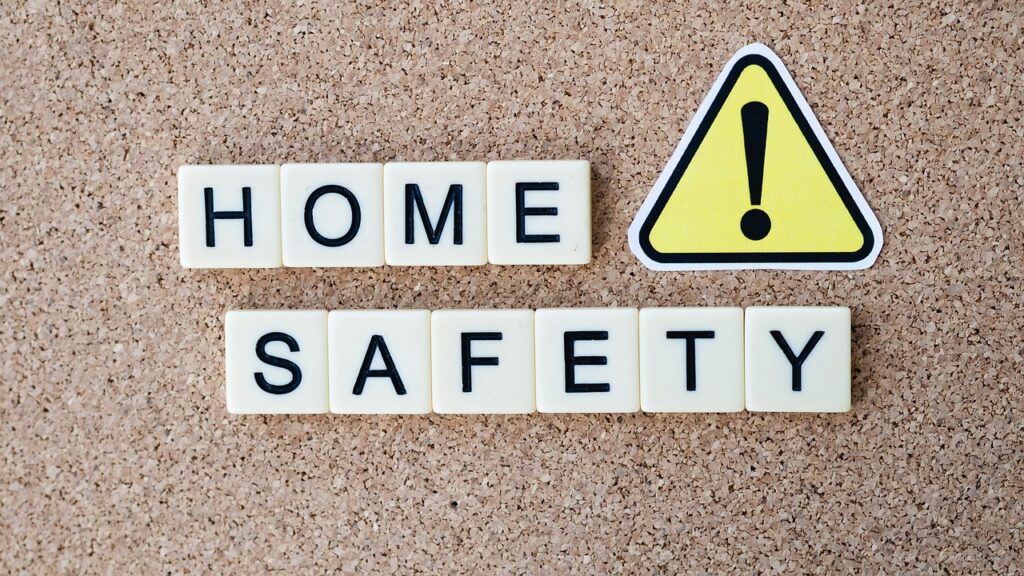Fire prevention week is October 6-12, 2024. This year’s theme is “Smoke Alarms: Make them work for you”.
Living in California, I think of big fires impacting our community when I think about fire. This year, more than 1,400 people, including 43 firefighters, lost their lives to fires in the US. Thousands of acres of land have been burned by wildfires this year — in total, more acres have been burned than the size of some states.
For today, keeping with the theme this year, let’s focus on the importance of having working smoke alarms in your residence. Fire prevention at home touches us all.

Image by PublicDomainPictures from Pixabay
Smoke Alarm Safety
Install
Install smoke alarms in every bedroom, outside each separate sleeping area (like a hallway), and on each level (including the basement) of the home.
Test
Test smoke alarms at least once a month by pushing the test button. This is a good way to check that your batteries are operational.
Replace
Replace all smoke alarms when they are 10 years old or stop responding when tested.

Image by wiredsmart from Pixabay
Fire Safety Plans
Having a fire safety plan for home and work is critical. Fires can start and spread in the blink of an eye.
Per SafetyCulture.com fire safety is of paramount importance for the following reasons:
- Preserving life – Implementing measures helps protect individuals from harm and ensures their well-being.
- Protecting property – By following fire safety protocols, there’s minimal risk of property loss and destruction, potentially saving valuable assets and investments.
- Preventing financial losses – Adequate measures reduce the risk of fire-related damages, avoiding financial burdens associated with property damage, repairs, and insurance claims.
- Safeguarding the environment – Since fires can release toxic gases and pollutants and destroy natural habitats, fire safety practices can prevent such incidents and minimize harm to the environment.
- Ensuring business continuity – By safeguarding the workplace against fires, businesses can protect their employees, maintain productivity, and avoid costly downtime.
- Complying with regulations – Many jurisdictions have specific codes and regulations that must be followed. Adhering to these ensures legal compliance and helps avoid penalties or legal consequences.
- Promoting public safety – By prioritizing fire safety, communities can create a safer environment for everyone, reducing the overall risk of fire-related accidents and emergencies.
According to the US National Safety Council (NSC), the leading causes of home fires and injuries are cooking and heating. Thus, fire safety at home should be prioritized by practicing safety tips and protocols when using electrical appliances, cooking equipment, and others that may be fire hazards.
Three important steps when creating a fire safety plan:
Fire Prevention
The best fire fighting measure is prevention. It is important that workers are trained on fire safety in order for them to develop heightened awareness about fire hazards. They should be knowledgeable about emergency procedures and the operation of fire protection equipment. Fire risk assessments are also necessary as they provide insight on which hazards are present and the necessary measures to manage their risk. Safety officers can utilize fire safety checklists to conduct comprehensive checks of these aspects of the fire safety plan.
Fire Fighting
Fire safety plans at home and work should include regular inspections of equipment for active fire protection (AFP), such as fire alarms, fire extinguishers, fire sprinkler systems, and smoke detectors, to ensure they are functional at all times. Work Safety officers and or facility engineering teams must carefully plan and design the appropriate fire fighting and protection system as this is the first thing the people will rely on in case of an incipient fire.
Emergency Evacuation
Individuals can fight home fires with home firefighting equipment. At work, check with management about evacuation plans during a fire emergency. Everyone should know the emergency evacuation plan, which includes contact details of safety authorities, an emergency exit map, and other fire emergency protocols. To measure knowledge of emergency evacuation plans, fire safety plans should also include regular fire drills to ensure readiness.

Photo by Evan Wise on Unsplash
Fire Hazards
Look out for fire hazards at home, work, and in public settings. Here are some common examples:
- Electrical hazards – faulty wiring, overloaded circuits, damaged electrical cords, and malfunctioning electrical equipment
- Cooking-related hazards – grease buildup, unattended cooking, and misuse of cooking appliances
- Heating sources – improper use of heating devices such as portable heaters, fireplaces, and wood-burning stoves
- Flammable liquids and chemicals – gasoline, paint thinners, and solvents
- Smoking – careless disposal of cigarette butts and smoking materials
- Open flames – unattended candles, incense, and open flames
- Flammable materials – paper, cardboard, textiles, and flammable gasses
Educate
Educate yourself about fire safety. I highly recommend practice drills! When a fire in my community was within 3 miles of me, I packed my car, to see how easy it would be and how long it would take. This was invaluable and allowed me to modify my plan.
Making time to assess what’s what at home and work allows you to focus on what’s important to you and those who count on you daily. It’s not always easy to carve out time, I know!
If you have any questions about resources to help you and yours, send me an Email or Message me. For additional information about my work check out @ The Living Planner or @ The Living Planner.
It’s important to me that you have a resource when it comes to planning for life contingencies. Things can change in the blink of an eye and I want you to know I’m here to help you decipher the ins and outs of being ready to be ready. It’s always a good time to explore ways for you and yours 🌞
Love this quote from Helen Keller, “Knowledge is love and light and vision.” To safety! Lynn
#Can’tPredictCanPrepare #PlanForTheUnplanned

